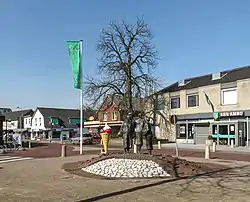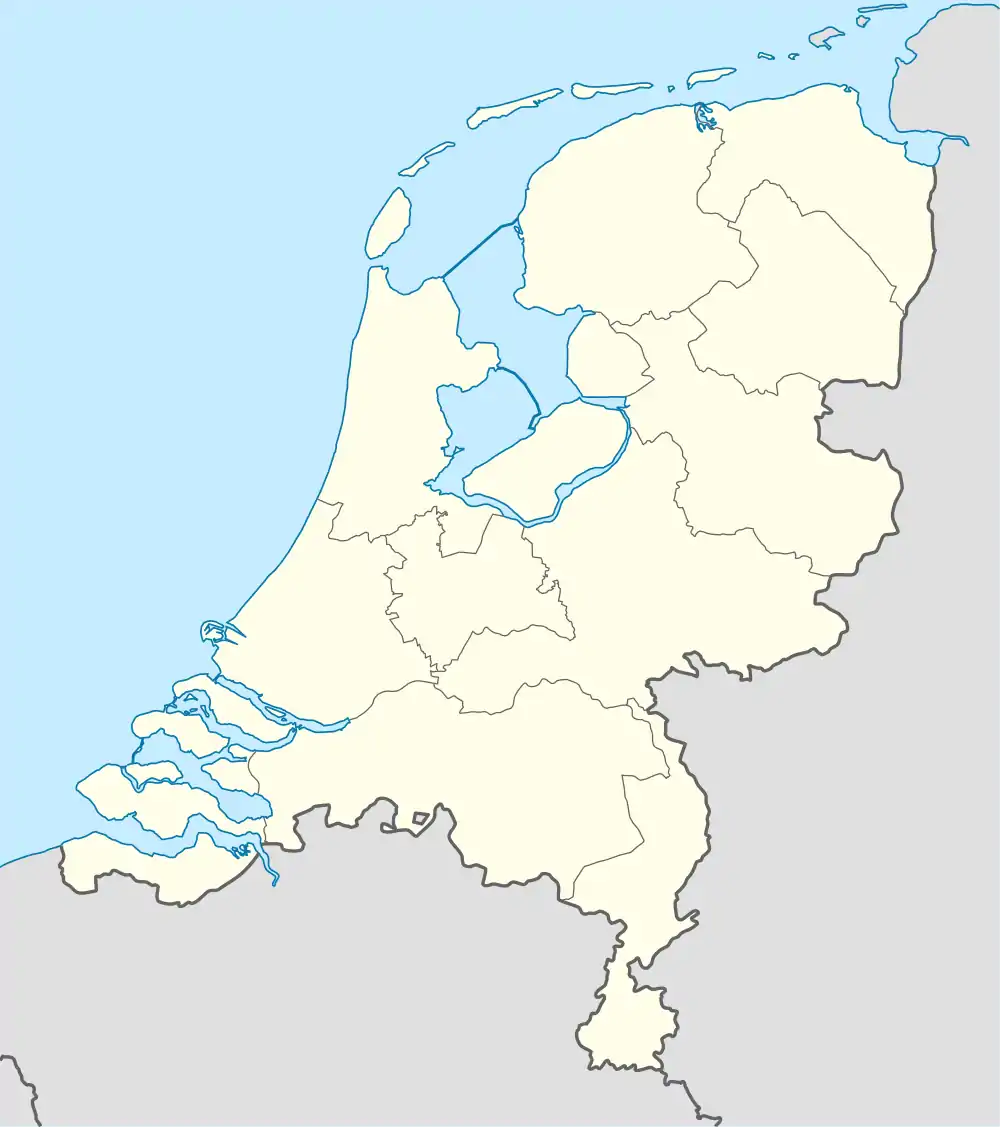Eerbeek | |
|---|---|
 Eerbeek, street view: de Stuijvenburchstraat | |
 Eerbeek Location in the province of Gelderland in the Netherlands  Eerbeek Eerbeek (Netherlands) | |
| Coordinates: 52°06′19″N 6°03′48″E / 52.10528°N 6.06333°E | |
| Country | Netherlands |
| Province | Gelderland |
| Municipality | Brummen |
| Area | |
| • Total | 17.08 km2 (6.59 sq mi) |
| Elevation | 20 m (70 ft) |
| Population (2021)[1] | |
| • Total | 9,845 |
| • Density | 580/km2 (1,500/sq mi) |
| Time zone | UTC+1 (CET) |
| • Summer (DST) | UTC+2 (CEST) |
| Postal code | 6961[1] |
| Dialing code | 0313 |
Eerbeek is a town in the municipality of Brummen in the province of Gelderland in the Netherlands. Eerbeek was first mentioned in 1046 as Erbeke. In the 18th century, Eerbeek became a centre of paper production. Due to its proximity to the Veluwezoom National Park, Eerbeek is popular with tourists.[3]
History
The village was first mentioned in 1046 as Erbeke. It is named after a stream, however the etymology is unclear.[4] Eerbeek developed near the spring of the Eerdbeek. In the 18th century it became a centre of paper production.[5]
Coldenhove Castle (Dutch: Kasteel Coldenhove) was a castle used as hunting lodge by the dukes of Guelders and the princes of Orange. Nothing remains anymore of the castle.
Huis te Eerbeek is a havezate (manor house) from the 14th century. It was rebuilt in neoclassic style in 1872, however one wing of its medieval predecessor has remained. It is surrounded by a large park, and is nowadays used as hotel and a conference centre.[5][6]
The water mill Oliemolen was built around and used to function both as an oil mill and a grist mill. A water mill was first referenced at the site in 1395. It remained in service until 1917. In 1967, the building was restored, however the grist mill part was modified into a restaurant.[7]
The Dutch Reformed church dates from 1930 and is a replacement of its 1857 predecessor. The tower which was built between 1858 and 1859 has remained and is detached from the church.[5]
Eerbeek was home to 747 people in 1840.[6] In 1887, a railway station was built on the Dieren to Apeldoorn railway line. It remained in service until 1950.[8] In 1975, it reopened as part of a museum line operated by the Veluwsche Stoomtrein Maatschappij.[5]
People from Eerbeek
- Jacob Emil van Hoogstraten, Director of the Department of Economic Affairs in colonial Indonesia
- Karel Aalbers, former chairman of football club Vitesse Arnhem
- Daan Huiskamp, football player
- Jan Mankes, painter
- Willem de Mérode, poet
- Edward Sturing, football player and coach
- Max Carl Wilhelm Weber, zoologist
- Robert de Haan, racing driver
Gallery
.jpg.webp) Huis te Eerbeek
Huis te Eerbeek Train arriving in Eerbeek (1975)
Train arriving in Eerbeek (1975) Draw bridge
Draw bridge The water mill of Eerbeek
The water mill of Eerbeek
References
- 1 2 3 "Kerncijfers wijken en buurten 2021". Central Bureau of Statistics. Retrieved 13 April 2022.
- ↑ "Postcodetool for 6961AA". Actueel Hoogtebestand Nederland (in Dutch). Het Waterschapshuis. Retrieved 13 April 2022.
- ↑ "Huis Te Eerbeek". Veluwe actief (in Dutch). Retrieved 13 April 2022.
- ↑ "Eerbeek - (geografische naam)". Etymologiebank (in Dutch). Retrieved 13 April 2022.
- 1 2 3 4 Ronald Stenvert & Sabine Broekhoven (2000). "Eerbeek" (in Dutch). Zwolle: Waanders. p. 117. ISBN 90 400 9406 3. Retrieved 13 April 2022.
- 1 2 "Eerbeek". Plaatsengids (in Dutch). Retrieved 13 April 2022.
- ↑ "watermolen". Molen database (in Dutch). Retrieved 13 April 2022.
- ↑ "station Eerbeek". Stationsweb (in Dutch). Retrieved 13 April 2022.
External links
 Media related to Eerbeek at Wikimedia Commons
Media related to Eerbeek at Wikimedia Commons- Eerbeek's Info site (in Dutch)